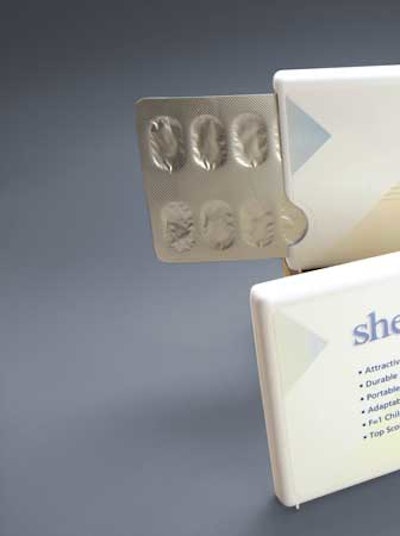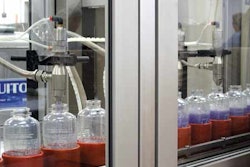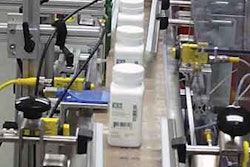Peter Mayberry, executive director of the Healthcare Compliance Packaging Council, calls that IOM recommendation “pure gold.”
The report seems sure to set off a debate both within industry and in Washington on whether drug manufacturers are moving quickly enough into blister packs, though there is no federal requirement of any kind that they do so. The report also criticizes the state of drug packaging generally, and suggests that the Food and Drug Administration (FDA) publish a guidance document for drug manufacturers to help them get better at designing packaging.
But the report's recommendations on unit-of-use and unit-dose packaging are apt to be more controversial. Alan Goldhammer, associate vice president, Pharmaceutical Research and Manufacturers of America (PhRMA), notes that drug companies already put certain products in unit-dose packaging. But any individual company's decisions to extend unit-dose packaging will be based on “what their customers want.” He adds, “It will be a commercial decision.”
Unit-dose for hospitals
Almost all of the major manufacturers are in the process of putting at least one SKU of every drug they sell in a unit-dose package that they deliver to hospitals, according to Renard Jackson, executive vice president, business development, packaging services at Cardinal Health. That is because of the Food and Drug Administration's (FDA) drug bar-coding requirement that went into effect in April of this year.
It requires all manufacturers, whether they sell direct to hospitals or through wholesalers, to make sure each drug container that ends up in a hospital pharmacy has a linear bar code which, at a minimum, contains the drug's National Drug Code (NDC) number. That FDA requirement grew out of a 1999 IOM report that estimated there are 98,000 deaths annually from medication errors.
The FDA rule does not require that hospital SKUs be packaged in a unit-of-use or unit-dose package. But Cardinal's Jackson says most of the 200 pharmaceutical companies that Cardinal provides contract packaging services to are beginning to do just that. Thus, they are complying with the “spirit” of the FDA rule.
Bulk bottles for pharmacies
Products sent to retail pharmacies are still being packaged in large bulk bottles. But it is not clear how quickly the drug companies are transitioning to hospital SKUs in unit-dose packaging.
Whatever drug packaging trends are afoot since April, this latest IOM report points out that unit-of-use packaging (which the report does not differentiate from unit-dose packaging) has been much less prevalent in the U.S. than in Europe and Asia, and that medication errors still remain a major problem despite the stir created by the 1999 report.
“The frequency of medication errors and preventable adverse drug events is cause for serious concern,” said committee co-chair Linda R. Cronenwett, dean and professor, School of Nursing, University of North Carolina, Chapel Hill. “We need a comprehensive approach to reducing these errors that involves not just health care organizations and federal agencies, but the industry and consumers as well.”
Cardinal's Jackson, too, read the report as a criticism of lack of progress since the 1999 report was published. Jackson admits that, as the IOM report states, only about 20% of U.S. drugs have been in unit-dose packaging as compared to 80% overseas. But again, he believes that is changing because of the FDA bar-code rule.
Special doses for kids
Opal Johnson, marketing director at Pearson Medical Technologies, which sells its intelliPack2 blister packaging and m:Print bar-code labeling equipment to smaller hospitals, agrees with Jackson that manufacturers are transitioning hospital SKUs to unit- dose packages. “The question is,” she adds, “how fast they are doing that? What are there, 80,000 drugs out there?”
Johnson says there will always be a hospital market for equipment like intelliPack2 and m:Print because doses of medications administered in hospitals to children have to be assembled in the hospital pharmacy. Very few medications come in child dosages. A child might need 20 milligrams when the dosage supplied in unit-dose packaging from the manufacturer is 40 milligrams. So the hospital pharmacy has to break that pill in half and package it. Hospitals will also have to continue to package compounded medications.
Not only does the IOM report rue the lack of unit-dose packaging, it also notes that when bar codes are being applied they are not being read at the hospital bed by the nurses whose job it is to administer the medication. It says hospitals, repackagers, and vendors of bar-coded medication administration systems use up to six different bar-code standards, each with its own special characteristics, features, and methods for encoding product information.
Costs an issue
That makes it costly for a hospital to invest in scanners or equipment to repackage the contents of the manufacturer's container into unit-dose packages in the hospital pharmacy. When that repackaging is done, the IOM report says the error rate is a whopping 17%! The IOM report recommends that regulators and legislators set “minimum functionality standards” for error prevention technologies.
“I can put the Bible on a bar code,” says Pearson's Johnson. “But I have a client right now where the pharmacy had to scale down what it was putting in the bar code because the scanners on the hospital floor could not read them.”
Again, the FDA rule only requires a linear bar code with the NDC. Any garden-variety hospital scanner can read that, if the hospital has scanners at bedside. Alas, the majority, at last count, do not. But some hospitals are trying to jam other information into the bar code. That complicates readability.
But the IOM report's implications for drug packaging go far beyond unit-of-use packaging. The report also criticizes the way logos and typefaces are used on packaging, and urges the FDA to issue two separate guidance documents, one on drug naming, one on labeling and packaging, by the end of 2006. The FDA already had a single guidance document covering those three areas on its list of documents to work on in 2006. But no draft has been published; so there is no way to compare the elements of that guidance to what the IOM recommended, which is fairly extensive.
For example, with regard to a labeling and packaging guidance document, the IOM wants drug manufacturers to use something called Failure Modes and Effects Analysis (FMEA) in labeling and packaging design, and then submit those results as part of a New Drug Application.
The IOM says that in the absence of such guidance there is “great inconsistency” among drug manufacturers in terms of labeling and packaging practices aimed at reducing medication errors.
PhRMA's Goldhammer says he is still looking at the report's recommendations on a labeling and packaging guidance document. He is not familiar with FMEA, so he cannot comment on whether it is appropriate or not.
But Sen. Charles Grassley (R-Iowa), chairman of the Senate Finance Committee, highlighted the packaging guidance recommendation in a statement he issued after the IOM report came out. It was Grassley who authored the amendment to the 2003 Medicare Modernization Act, best known for establishing the Medicare outpatient drug benefit, which required the IOM report.






























